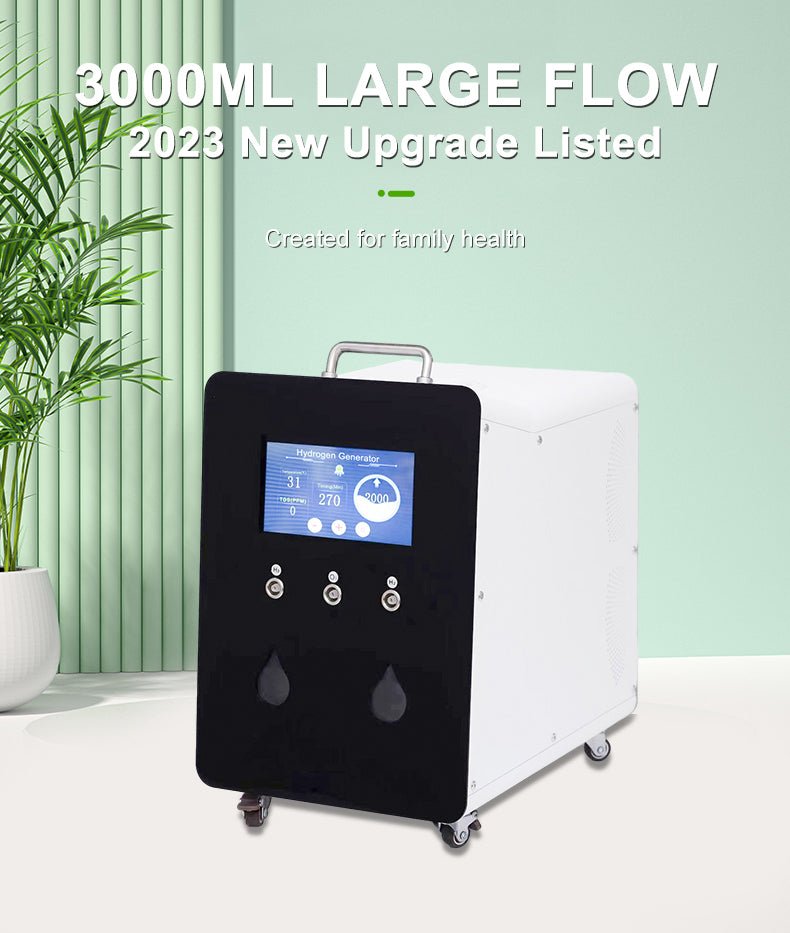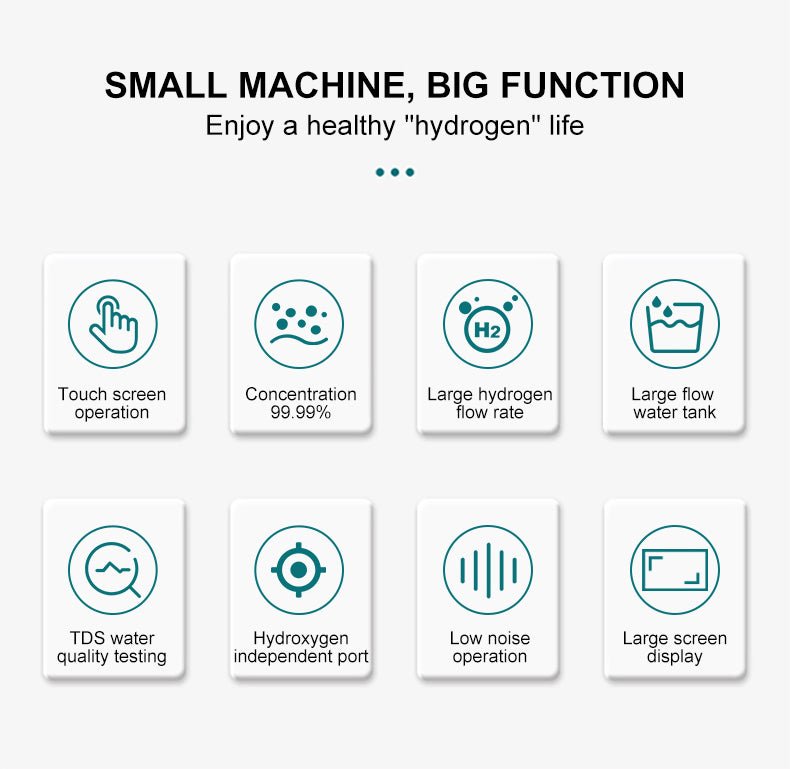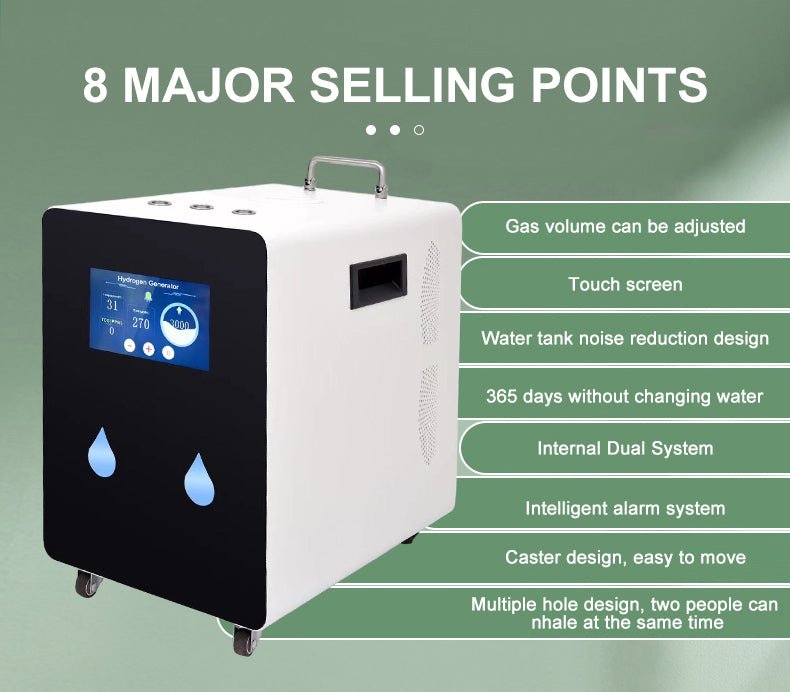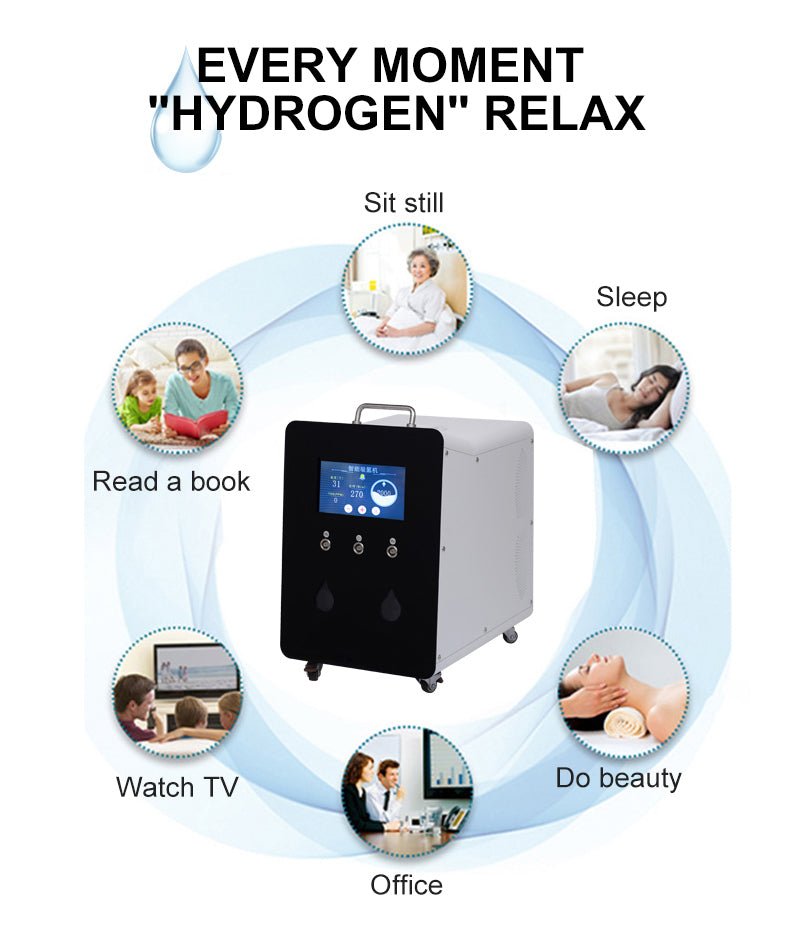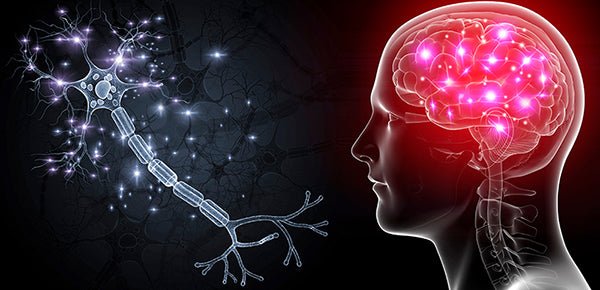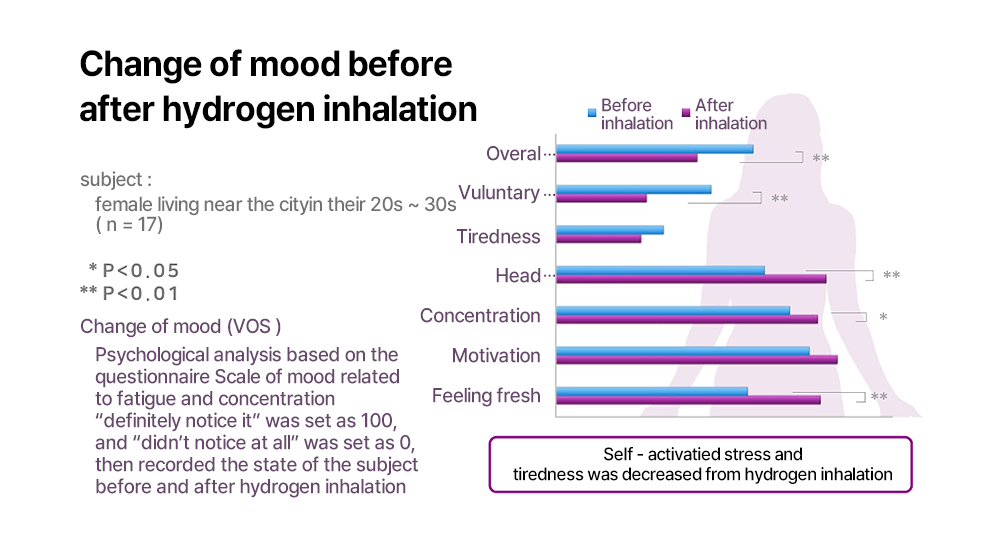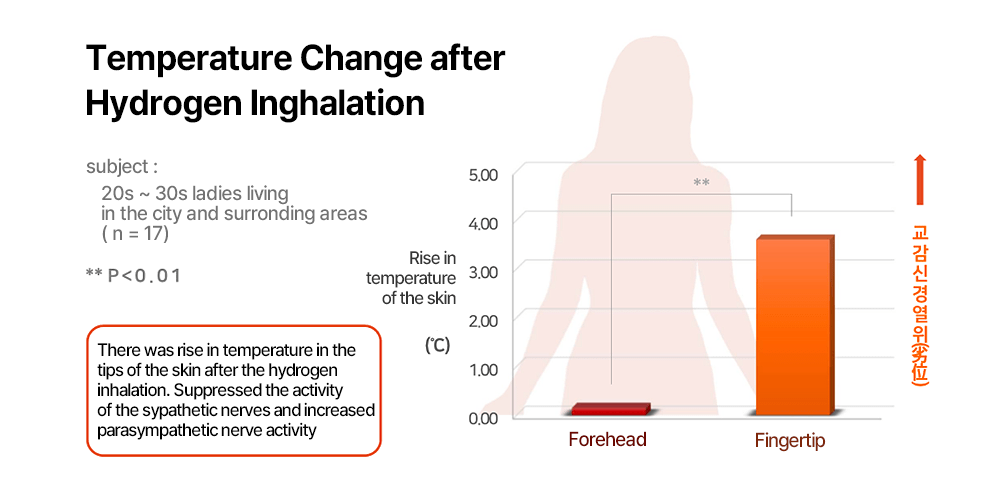Wasserstoffinhalator (2000 ml H2)
Wasserstoffinhalator (2000 ml H2) wird geändert und wird gesendet, sobald es wieder auf Lager ist.
Olive 3000 ml hydrogen inhalator machine
Presenting the Olive Hydrogen Gas Generator and Inhalation Machine - a state-of-the-art device, meticulously designed for Molecular Hydrogen Inhalation Therapy, and outfitted with a robust 3000 ml capacity.
Molecular Hydrogen Inhalation Therapy harnesses the potent antioxidant power of hydrogen gas. A standard therapy session involves the inhalation of a blend of hydrogen and oxygen gases, in a ratio of 2:1, delivered through a nasal cannula. Session duration is typically around 15 minutes, subject to individualized adjustment based on specific needs. The therapy effectively boosts hydrogen levels in the body.
Scientific investigations reveal that this therapy elevates hydrogen concentrations in both the bloodstream and brain tissues. Given hydrogen's molecular size, it permeates cells effortlessly, facilitating the elimination of harmful toxins and free radicals - agents implicated in disease progression and aging.
Hydrogen gas inhalation therapy, predominantly at low concentrations, has sparked considerable interest within the medical research community. Numerous studies indicate the potential of hydrogen gas to protect the lungs against a broad spectrum of disorders, including acute lung injury, chronic obstructive pulmonary disease, asthma, lung cancer, pulmonary arterial hypertension, and pulmonary fibrosis.
Principal Health Benefits of H2 Inhalation Therapy:
Antioxidant Properties: Hydrogen selectively neutralizes harmful free radicals, functioning as an effective antioxidant. This feature aids in defending cells against damage, which could trigger various diseases.
Neuroprotective Effects: Preliminary studies suggest that hydrogen therapy may offer protective effects on the brain, potentially reducing damage following traumatic brain injuries and alleviating symptoms in acute neuronal conditions.
Potential Prevention of Neurodegenerative Diseases: Hydrogen therapy may help prevent neurodegenerative diseases like Parkinson’s disease and traumatic brain injury.
Anti-Inflammatory Properties: Hydrogen exhibits anti-inflammatory properties, which could prove beneficial in conditions characterized by chronic inflammation.
Enhanced Athletic Performance: One study found that brief periods of hydrogen inhalation boosted healthy individuals’ torso strength and running efficiency. This effect might be attributed to its antioxidant and anti-inflammatory properties, which can reduce exercise-induced inflammation and oxidative stress.
Potential for Stroke and Heart Attack Recovery: Hydrogen gas could potentially limit the damage inflicted by ischemia-reperfusion injury, which occurs when blood supply returns to tissue after a period of oxygen deprivation, a common occurrence following heart attacks and strokes.
Potential Benefits for Metabolic Syndrome: Some research suggests that hydrogen therapy could help mitigate symptoms of metabolic syndrome, a cluster of conditions that increase the risk of heart disease, stroke, and type 2 diabetes.
Potential Benefits for Other Organs: While more research is required, some studies suggest that hydrogen therapy could yield beneficial effects on other organs, such as the heart and kidneys.
Potential Benefits for Organ Transplantation and Radiation-Induced Damage: Hydrogen therapy has shown promise in reducing damage and improving outcomes in organ transplantation and radiation therapy.
Cancer Treatment: Emerging research suggests that molecular hydrogen inhalation therapy could benefit cancer patients. In vivo studies indicate that H2 can help restrain tumor growth, and this therapy form has also demonstrated alleviation of chemotherapy side effects.
Effects on Metabolism: Studies suggest that hydrogen gas could aid in regulating glucose and lipid metabolism, potentially assisting in conditions like diabetes and high cholesterol.
Positive Impact on Covid Recovery: Molecular hydrogen (H2) inhalation therapy may improve respiratory and physical fitness in acute post-COVID-19 patients. A study found that 14 days of H2 inhalation significantly enhanced walking test results and lung function, highlighting its potential as a safe, effective recovery aid for post-COVID-19 patients.
Chronic Fatigue Syndrome (ME) Management.
Additional Benefits for Cancer Patients:
Patients undergoing radiotherapy often struggle with fatigue and a reduced quality of life (QOL). Radiotherapy-induced side effects are thought to result from heightened oxidative stress and inflammation, arising from the generation of reactive oxygen species during treatment. As a therapeutic medical gas with antioxidant properties, hydrogen can alleviate tissue inflammation. A study found that hydrogen treatment, given as hydrogen-supplemented water, improved QOL in patients undergoing radiotherapy. By inhaling 67% hydrogen gas for one hour twice daily, the growth of GBM (glioblastoma multiforme) was significantly curbed.
Notable Features of the Olive Hydrogen Gas Inhalation Machine:
- Simultaneous Use: Engineered for efficient use by two individuals concurrently.
- Comprehensive Accessories: Adaptable for various body parts, providing multiple functions.
- Advanced Features: Equipped with an alarm system for extended machine life, preset usage time, and a sleep function for optimal night-time use.
- User-friendly: Showcases a large screen with large fonts, enhancing usability, particularly for older users.
- Advanced Technology: The √SPE electrolytic cell employs sophisticated platinum coating technology and a DuPont membrane for durability. The device also features a safer food-grade water tank, automatic water quality detection, and voice prompts for effortless operation.
Technische Spezifikationen:
Name: 3000 ml Wasserstoffgenerator OLV-3000
Wasserstoffstrom: 2000 ml/min, Sauerstoffgasstrom: 1000 ml/min
Wasserstoffreinheit: 99,99%
Touch-Screen
Nennleistung (W): < 480W
Nettogewicht (kg): 15 kg
Beinhaltet: 2 PCs Nasenkanüle, 1 Stcs -Brille, 1 Stcs Ohrstöpsel mit Rohr
Die Durchflussrate kann eingestellt werden:
Wasserstoffstrom: 2000 ml/min, Sauerstoffgasstrom: 1000 ml/min
Wasserstoffstrom: 1500 ml/min, Sauerstoffgasstrom: 750 ml/min
Wasserstoffstrom: 1000 ml/min, Sauerstoffgasstrom: 500 ml/min
